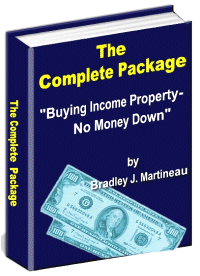The idea of renovation and fixer uppers are the same: Buy a
property offered at below-market price because it has problems, fix those
problems, and resell it at or above market.
Select basically sound properties that have been neglected
due to the former owner's cash-flow problems. Don't be the first in to a
run-down neighborhood. Its renovation potential may never be realized. Don't be
the last in. You will pay dearly because there's no risk. Try to buy when about
30 percent of a neighborhood has been renovated, evidence that the trend has
momentum. Beware of buying fire- or water-damaged buildings. Structural damage
may be too great to justify renovation. With some spending on improvements and
maintenance, you can boost tenant morale and attract a better grade of tenant.
Sweat equity, then, means using your sweat to improve the property's equity.
Much of the work revolves around important but inexpensive tasks, such as trash
removal, painting, and landscaping.
Look for a property that can be changed to a better
income-producing property. You should look for a property well below the going
market. In the case of a rental property, rents should be about 40 percent below
typical levels in the area. And the thing that keeps rents at $275 in a $500
neighborhood is the building's superficial ugliness. Replacing peeling paint
with siding, linoleum with carpeting, and cracked walls with paneling are ways
to increase your real-estate profits. Attractive units will rent faster and will
bring in better rents than unattractive units. An attractive building will also
sell better and will command a better price than a run-down building. Cosmetic
renovators are likely to fare best in areas where new construction is limited.
Lack of new buildings means there will be high demand for rental space and that
your renovated building won't have to compete with the new properties. The most
common mistake is to buy a building that is essentially renovated, but not
perfect. Then you spend thousands achieving perfection and discover that the
market rental value has hardly moved up at all. Related to the face-lift is
property that lends itself to a complete conversion. Find a building zoned for a
duplex but presently being used as a single-family. Add a bathroom and a kitchen
and either rent or sell as a duplex. Converting commercial structures to
apartments, cooperatives, and condominiums is another possibility. Investors
have converted bowling alleys into single-family homes, trains into apartments,
barns into condos, and factories into high-priced lofts. You're limited only by
your budget and your imagination. Sometimes the property's potential is an
attached lot. You can keep the lot for a few years and build on it, thus
increasing your income properties. Or you can split it off and sell it at a
profit.
The positive aspects of renovating an old building include a
sense of accomplishment, an outlet for creativity, and the possibility that it
will be a good investment. The reward of hard labor comes in the satisfaction of
being able to work with your body as well as your mind and to see and enjoy the
fruits of your labor. There's a revitalization of the spirit
that allows you to tackle the next job with renewed vigor. It's good to work
hard.
However, the experience of returning a house to its former
glory can be frustrating and overwhelming to anyone who tries it. The worst
aspects include not knowing what you are getting into, living amid the chaos of
construction for long periods, and running out of money. Also, players of the
turnaround game seldom place any value on their own labor and rarely ever adjust
their profits downward by taking into account the number of hours they put into
their holdings. Here are renovating rules of thumb:
1. Time: Plan to spend 2 hours for every square foot of living space you
are working on.
2. Money: Budget an amount equal to 25 percent of the purchase price for
renovation costs.
Study local zoning laws before you make major changes.
Removing a pipe or a wall frequently requires a building permit. However, after
you get the permit, your tax assessment will be raised, probably by as much as
the value of the renovation. See if you can get an exemption for renovating.
Some-times the assessor will only exempt or partially exempt new additions, not
renovations.
It costs a lot of money to hire even unskilled labor. The
more work you do yourself, the more money you will have for other improvements.
To find the best skilled workers, get names from the previous owner, neighbors,
real-estate agent, insurance agent, or bank. Look into a middle route between
contracting out for construction work and doing it yourself. Find an amateur
homebuilder or retired handyman with low overhead costs willing to work on a
time and materials basis.
Even if you don't have any skill with a hammer or saw, you
can surely tear out and cart away materials that aren't needed. You can dig
trenches for water lines, sewer pipes, or footings. Interior and exterior
painting is some-thing even the neighborhood kids might enjoy doing.
Wallpapering, stripping, sanding, and tiling are all areas you can get involved
in.
There are two areas you should probably avoid, not because
they require any great skill or understanding, but because shoddy work could be
dangerous: electrical wiring and plumbing. Changes connected with plumbing and
wiring are among the most expensive areas of renovation, as anyone who has
relocated a kitchen or added a bathroom would testify.
Don't be discouraged by broken beams, crumbling interior
plaster, or even a leaking roof. As long as the exterior walls and the
foundation are solid, shabby interiors are secondary. A good foundation and a
square frame are generally good indicators that a structure is worth
rehabilitating. However, repair and replacement requirements should still be
weighed against the in-creased value of the property.

